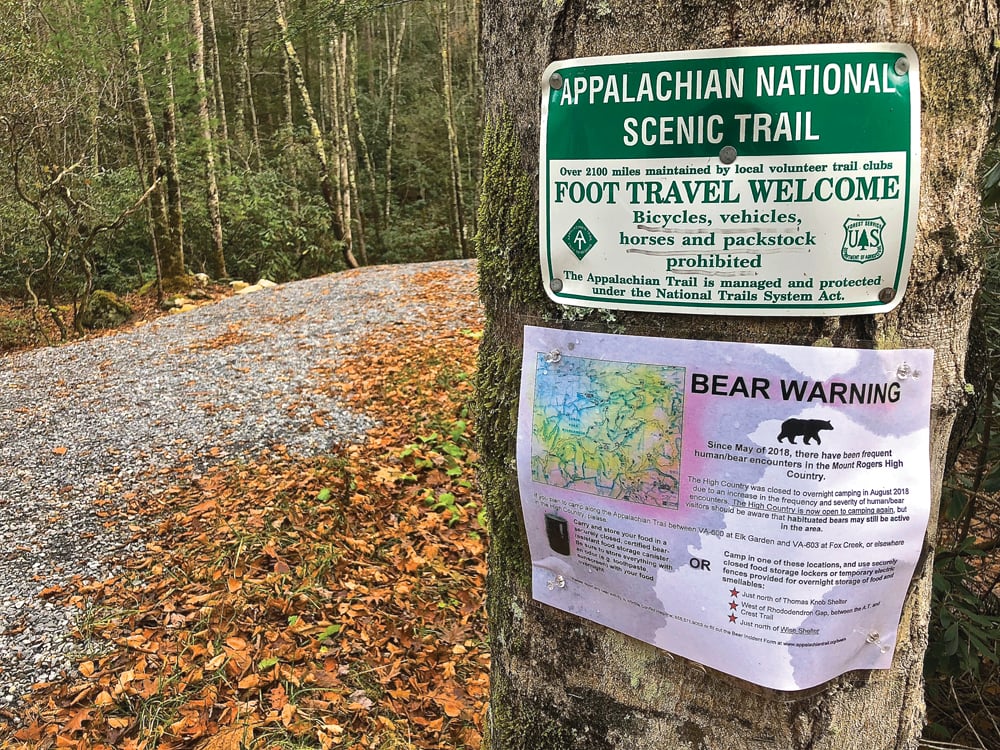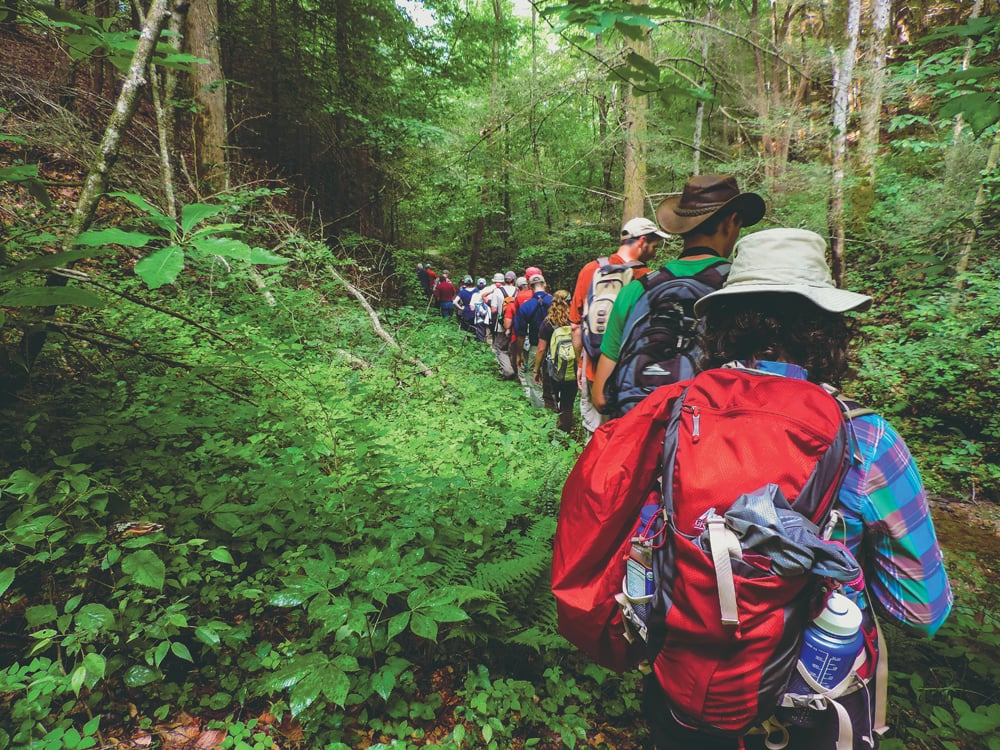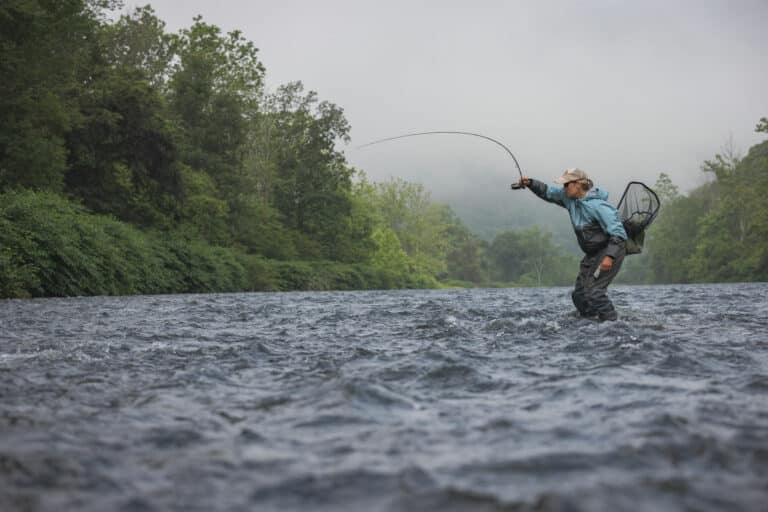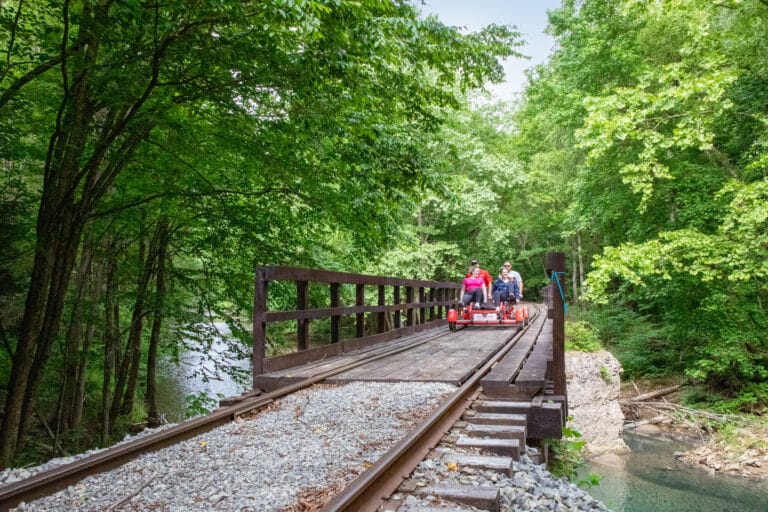User conflicts are a growing problem in the Blue Ridge, ranging from vandalism and trash-laden trails to the closure of trail systems due to overuse.
We often borrow the euphemism “loved to death” to describe these problems, but are we really loving a place if our activities are causing so much harm? Maybe we should be asking a deeper question: are outdoor enthusiasts losing their conservation ethic?
As education director of the Leave No Trace Center for Outdoor Ethics, Ben Lawhon grapples with user conflicts daily. Lawhon focuses on a handful of outdoor destinations named “hotspots” for their higher-than-normal amount of challenges. The Blue Ridge has featured prominently on that list, with Linville Gorge, the Appalachian Trail’s southern terminus, and the Red River Gorge all making the cut.
Lawhon says many sustainability issues share a common thread. “There is an education gap, and it is critical,” he says, since users “may not have the skills or the knowledge to recreate in a way that protects the environment.” And the ease of sharing new destinations and behaviors via social media can throw fuel on that fire. “Managers are reporting not only spikes in visitation but increased impact as a result of social media postings,” Lawhon says.
There are hard data to back up that prospect. A few years ago, my college students and I surveyed more than 300 social media users who were also outdoor enthusiasts across Southwest Virginia and East Tennessee. Of those 300 people, over 90 percent reported placing a high conservation value on the outdoors. Sounds great, right? It does only until you dig deeper. Despite that interest, just 40 percent of those same people reported knowing how to find reliable conservation information. Fewer still personally knew a natural resource professional.
Other studies by social scientists show a clear link between engagement in outdoor activities and support for the environment. We need a strong tie to a place to have an interest in conserving it, even if the sources of those ties differ. A minimalist backpacker might develop the same love for protecting a national forest as a deer hunter or car-campers chugging PBR around a bonfire.
A 2009 study by researchers at Pennsylvania’s Red Rock Institute showed that passion can even translate into financial support, finding that each hiker or backpacker translates into $200-300 in donations pumped into conservation nonprofits annually. If you want to protect the environment, that’s a strong argument for getting more people into it.

Ultimately, this sets up a frustrating paradox. If advancing conservation means getting more people outdoors, how can we do it without damaging the very places we’re trying to protect?
Increasing recreation opportunities and securing more public lands is one approach, since it could relieve pressure from overuse while also protecting habitats and wildlife. This strategy is already underway in the Blue Ridge as state governments, private land trusts, and communities develop new parks and connect existing ones. But there’s still a lot of work to do, and campaigns to privatize public lands or slash management budgets can offset those efforts.
Addressing how users interact with the landscape is also critical. One of the lessons the Leave No Trace Center has learned is that engagement matters more than finger-wagging when it comes to educating users. “We’re not the social media police. We know that sort of tactic doesn’t really change behavior,” Lawhon explains. “What we try to do is lead by example.”
They don’t shame people or rattle off lists of rules governing outdoor activities; they engage outdoor enthusiasts and influencers directly, having more of a conversation about how individuals can cumulatively minimize their impacts.
I got to see how productive this approach can be when I joined a sustainable climbing summit at Breaks Interstate Park hosted by The Access Fund, a climbing advocacy group. I arrived expecting to see the usual rifts between resource managers and recreation enthusiasts, or at least the crowd breaking into those cliques once the event started.
I couldn’t have been more wrong. Zachary Lesch-Huie, one of the event’s organizers, circled us up and opened not with a list of problems that needed solving but a simple question: “Why are you here?” Together, we spent the better part of an hour laying out our motivations for getting outdoors. For some of us, that meant climbing. For others, it was conserving wildlife or managing natural resources.
As we introduced ourselves, it became apparent that we were each taking different routes to the same destination, even if we came from different backgrounds. We didn’t reach any resolutions, but that wasn’t the point. The idea was creating a community that could better find those solutions when we needed them.
That kind of inclusive community might be what’s missing from the social media equation that Lawhon mentions, even as online platforms connect more people to the outdoors. Our greatest problem might be not that we’re losing our conservation ethics but that an influx of new users is discovering the outdoors without making the connections needed to gain those ethics in the first place.
Lawhon is hopeful that problem can be addressed by the kind of community-building I experienced at the Breaks. “The people on the ground are making a huge difference,” he says. “Despite increased impacts, I don’t think all is lost.”
Starting a conversation won’t stop every case of trail abuse, of course, but perhaps it can create the dialogue needed to better prevent those problems from happening—and finding collaborative solutions to them when they do.








